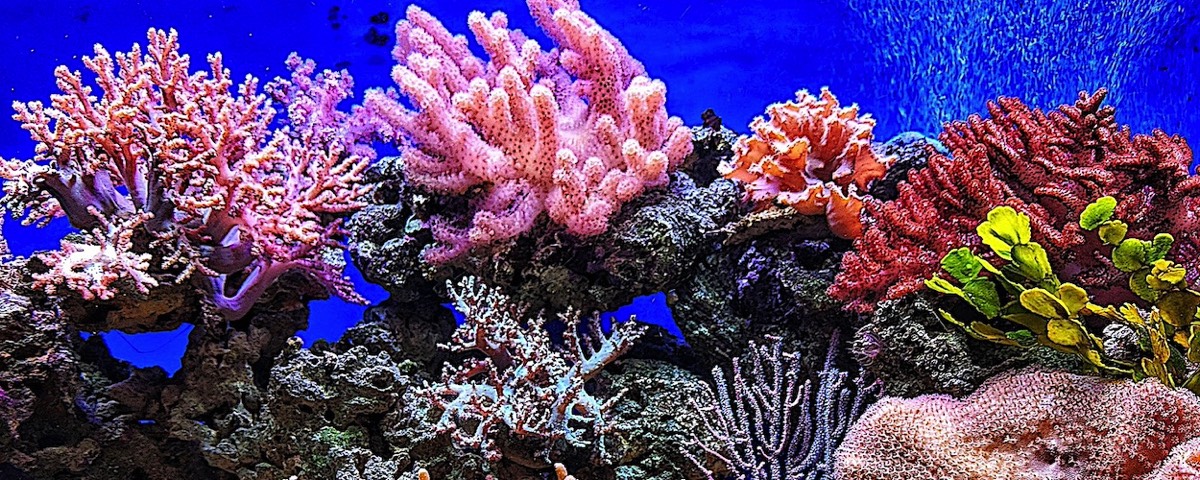
Coral Reef ecosystems are intricate and diverse collections of species that interact with each other and the physical environment. Coral is a class of colonial animal that is related to hydroids, jellyfish, and sea anemones.
EPA U.S. Environmental Protection Agency

Basic Information about Coral Reefs
What are Coral Reefs?

Coral is a class of colonial animal that is related to hydroids, jellyfish, and sea anemones.
EPA U.S. Environmental Protection Agency
Stony Corals, a type of coral characterized by their hard skeleton, are the bedrock of the reef. Stony Coral colonies are composed of hundreds of thousands of individual living polyps. Polyps are capable of drawing dissolved calcium from seawater, and solidifying it into a hard mineral (calcium carbonate) structure that serves as their skeletal support. When you look at a coral colony, only the thin layer on its surface is live coral; the mass beneath is the calcium carbonate skeleton that may be decades old.
Polyps of reef-building corals contain microscopic algae called zooxanthellae, which exist with the animal in a symbiotic relationship. The coral polyps (animals) provide the algae (plants) a home, and in exchange the algae provide the polyps with food they generate through photosynthesis. Because photosynthesis requires sunlight, most reef-building corals live in clear, shallow waters that are penetrated by Sunlight. The algae also give a coral its color; coral polyps are actually transparent, so the color of the algae inside the polyps show through.
Where are Coral Reefs found?

Corals can be found throughout the world’s oceans, in both shallow and deep water. Stony Corals also require tropical or sub-tropical temperatures, which exist in a band 30 degrees north to 30 degrees south of the equator.
EPA U.S. Environmental Protection Agency
Corals can be found throughout the world’s oceans, in both shallow and deep water. However, the reef-building corals that rely on a symbiotic relationship with algae need shallow, clear water allowing light penetration for photosynthesis. Stony corals also require tropical or sub-tropical temperatures, which exist in a band 30 degrees north to 30 degrees south of the equator.
Why are Coral Reefs important?

Coral Reefs are among the most biologically diverse and valuable ecosystems on Earth. An estimated 25 percent of all marine life, including over 4,000 species of fish, are dependent on coral reefs at some point in their life cycle.
EPA U.S. Environmental Protection Agency
Coral Reefs are among the most biologically diverse and valuable ecosystems on Earth. An estimated 25 percent of all marine life, including over 4,000 species of fish, are dependent on coral reefs at some point in their life cycle. An estimated 1 billion people worldwide benefit from the many ecosystem services coral reefs provide including food, coastal protection, and income from tourism and fisheries.
Healthy Coral Reefs provide:

Habitat, feeding, spawning, and nursery grounds for over 1 million aquatic species, including commercially harvested fish species.
Food for people living near coral reefs, especially on small islands.
EPA U.S. Environmental Protection Agency
Habitat, feeding, spawning, and nursery grounds for over 1 million aquatic species, including commercially harvested fish species.
Food for people living near coral reefs, especially on small islands.
Recreation and tourism opportunities, such as fishing, scuba diving, and snorkeling, which contribute billions of dollars to local economies.
Protection of coastal infrastructure and prevention of loss of life from storms, tsunamis, floods, and erosion.
Sources of new medicines that can be used to treat diseases and other health problems.
All of the services provided by coral reefs translate into tremendous economic worth. By one estimate, the total net benefit per year of the world’s coral reefs is $29.8 billion. Tourism and recreation account for $9.6 billion of this amount, coastal protection for $9.0 billion, fisheries for $5.7 billion, and biodiversity, representing the dependence of many different marine species on the reef structure.
Food for people living near coral reefs, especially on small islands.
Recreation and tourism opportunities, such as fishing, scuba diving, and snorkeling, which contribute billions of dollars to local economies.
Protection of coastal infrastructure and prevention of loss of life from storms, tsunamis, floods, and erosion.
Sources of new medicines that can be used to treat diseases and other health problems.
All of the services provided by coral reefs translate into tremendous economic worth. By one estimate, the total net benefit per year of the world’s coral reefs is $29.8 billion. Tourism and recreation account for $9.6 billion of this amount, coastal protection for $9.0 billion, fisheries for $5.7 billion, and biodiversity, representing the dependence of many different marine species on the reef structure.

Information about the Oceans

Splash in the water, play in the sand; if the beaches are clean, life is just grand. The sun and the sand makes beaches beautiful...
but Marine pollution has made some of their condition pitiful...Let us protect and enjoy our Oceans!
iOceanLife.com
Information: Sustainability

As populations have increased and we have relied on the Earth's natural resources—such as minerals, petroleum, coal, gas, and more—the Earth's biodiversity and creatures, from birds to insects to mammals, have declined in number.
iEarthLife.com
Information about Nature

This is our planet! So why we are not protecting it?”
This is where we live, why are we hurting our home. Live on our earth. Love our earth, laugh on our earth this is the only one we have – SAVE IT.
iEarthLife.com
Information about Life on Earth

Any organism that is said to breathe and feel with its senses is said to be alive
Beautiful Nature

I declare this world is so beautiful that I can hardly believe it exists. The sky, the mountains, the trees, the animals, give us a delight in and for themselves.
iBeautifulNature.com
